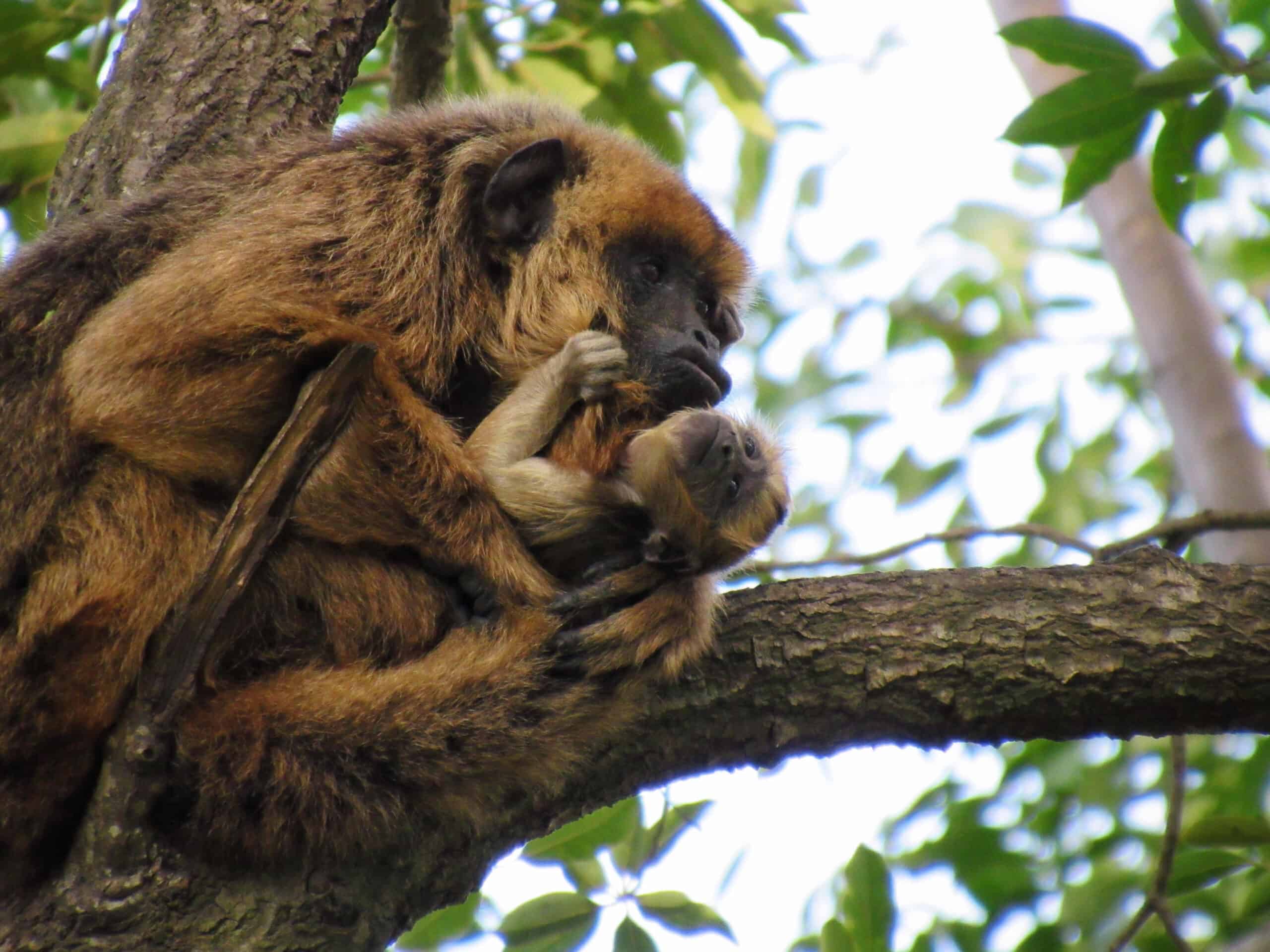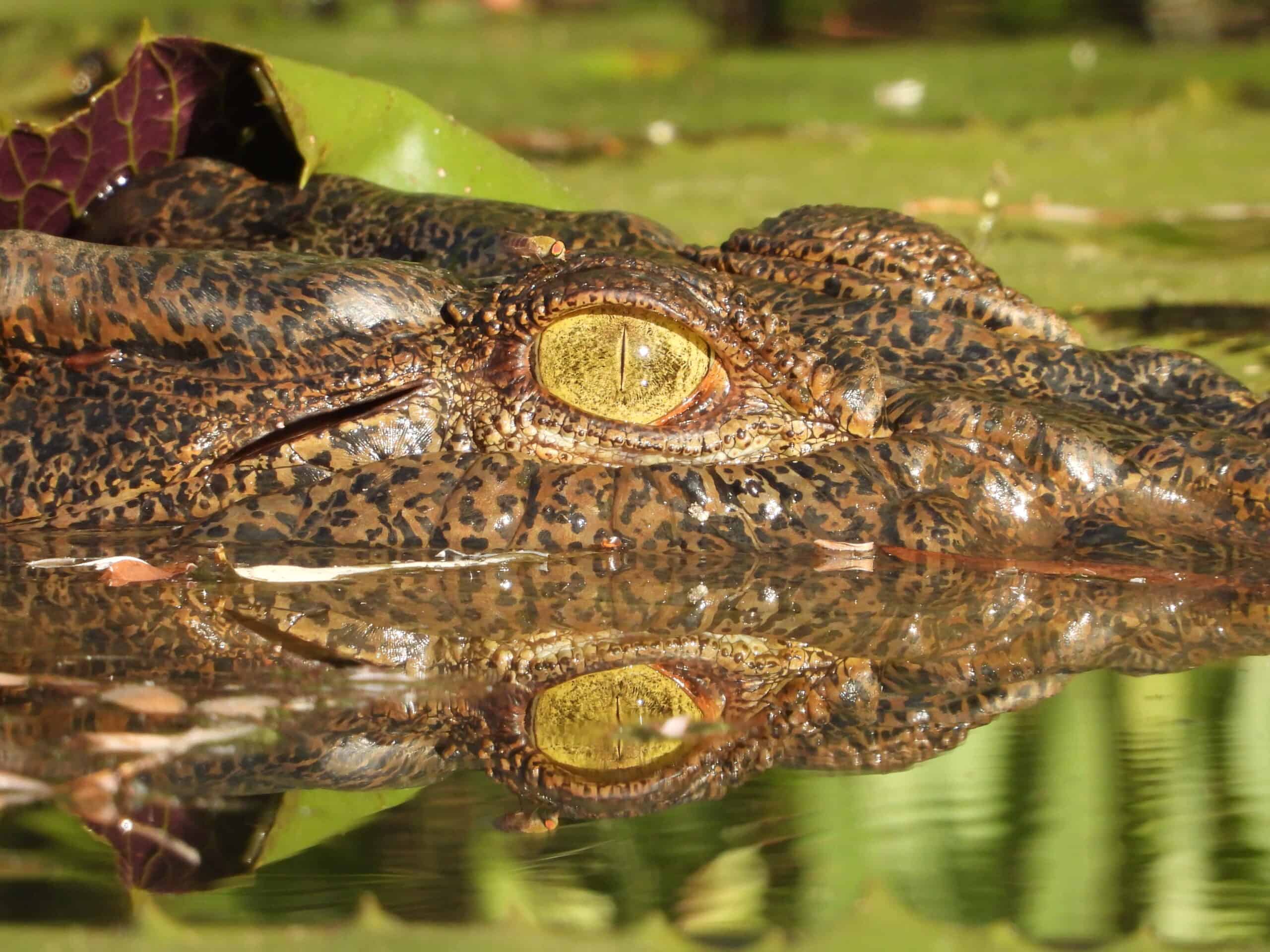Share this article
Wildlife Featured in this article
- Black-and-gold howler monkey
TWS2022: Howler monkeys avoid power cables—when they can
Researchers track dangers for primates in a Paraguayan city
Olivia Gervacio Jakabosky woke every morning before sunrise—just before the howls began in the small city of Pilar in southern Paraguay. She would hop on her bike and follow the sounds, which could travel a kilometer, echoing off the buildings of the suburb where she was staying.
“It sounded like a dog and a car at the same time,” she said.
Finding the monkeys was a struggle at first, Gervacio Jakabosky said. After waking at dawn, the troop of black-and-gold howler monkeys (Alouatta caraya) quickly went on the move. But once she tracked down one of the two troops she followed as part of work with Para La Tierra, a conservation organization focused on Paraguay from May to August in 2021, her work would begin.
Gervacio Jakabosky was observing how howler monkeys interacted with power cables in Pilar, which sits on the eastern bank of the Paraguay River on the border of Argentina. She presented her work, conducted while working on her undergraduate degree at Montana State University, on a research poster at The Wildlife Society’s 2022 Annual Conference in Spokane.
Cables are everywhere in the city, passing right through some of the trees where the monkeys spend most of their time, and they can be deadly. Para La Tierra estimated that one of the troops had lost about a third of its members over two months due to electrocution. Black-and-gold howler monkeys are listed as near threatened on the International Union for Conservation of Nature, but the species is understudied in Paraguay, and the conservation situation could be worse there than elsewhere in their distribution.
One of the troops mostly stuck to the outskirts of Pilar by the Paraguay River, while the other was more urbanized, often crossing big roads to travel between the trees where they fed. Once she located a troop, Gervacio Jakabosky would observe how close they were to cables, and record their GPS location.
Tracking them down was Gervacio Jakabosky’s biggest struggle. But once she found them, they spent most of their time resting. “The black-and-gold howler monkey is one of the laziest primates in the world,” she said.
Her observations revealed that the monkeys seemed leery of the power cables. They moved a lot more when the cables were around, either traveling away from them or otherwise not resting. In one tree cut right through by power lines, the monkeys spent most of their time in branches far from the cables.
They did use the cables sometimes to move, but Gervacio Jakabosky said that it usually seemed to be only to cross busy roads with lots of traffic, or occasionally in areas with dogs—another big risk for howler monkeys in the area.
Community connection
In between observing the troops, Gervacio Jakabosky, who was also working on a minor in sociology, also surveyed the local community about the monkeys. These surveys revealed that electrocution isn’t only a conservation problem. These incidents can lead to power outages, which can take time to fix due to low funding in Pilar.
While some people saw the monkeys as part of the community, others saw them as pests. This showed that better public outreach is needed to improve conservation for them. Some residents helped reveal more about the activity patterns of the monkeys, allowing Gervacio Jakabosky into their yards to observe them.
“This really illuminated to me how important community conservation is and including the community in the narrative,” said Gervacio Jakabosky, who is now starting her master’s degree in conservation and biodiversity at the University of Exeter in England.
Para La Tierra offers opportunities for community members to adopt a monkey—economically that is, and she said this is one of the ways to help the situation. But more money would be needed to limit electrocution, such as building bridges the monkeys could use to cross roads, or improving the insulation of the power cables in Pilar so electrocution is less likely.
Header Image: Black-and-gold howler monkeys are considered near threatened by the International Union for Conservation of Nature. Credit: Olivia Gervacio Jakabosky








